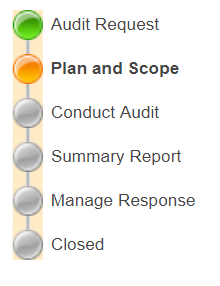The Windchill Audit Management Process
Introduction
The audit management feature provides the ability to conduct an audit in an organization. Using this capability, audit can be created, planned and executed in an organization.
Audit is a quality governance process used by upper management to ensure that the key corporate processes, requirements and directives are being followed. It is a process to gather evidence. Audit evidence is used to evaluate the implementation of audit criteria. Audits must be objective, impartial, independent, systematic, and well documented. The audit process must be both systematic and documented.
There are three types of audits:
• First-party audit
• Second-party audit
• Third-party audit
Windchill supports first-party and second-party audits only. First-party audits are internal audits. Organizations use first-party (internal) audits to audit themselves. Windchill Audit provides capability for first-party and second party audits without the external auditee having access.
Though each company usually defines their own schedule and workflow for conducting audits, they typically have these elements:
• Audit Criteria — Usually defined in a checklist, it can be policies, procedures, requirements, and so on.
• Auditee — Specifies the organization that is being audited. For example, supplier, manufacturing line, and so on.
• Auditor — The person who conducts the audit, or collects the evidence, or both.
• Audit Plan — Specifies the method to be followed for an audit.
• Audit Scope — Specifies the focus and boundary of an audit, criteria and time.
• Audit Evidence — Specifies the records, findings, factual statements verifiable information that relates to the audit criteria.
• Audit Findings — Specifies whether the findings of an audit show conformity or non-conformity to audit criteria.
You can install the audit module using the PSI installer. After installation, the option to create an audit template is available in Templates option in the quality container. For more information, see About Audit Templates.
The audit manager can create an audit using the audit template, and assign it to a quality auditor. The audit functionality comes with a search, create, edit, view audit information and other features. For more information, see Creating and Editing an Audit.
The quality auditor conducts an audit and executes the workflow of the audit through different life cycle states. The life cycle states of an audit can be viewed using the life cycle state link available on the Audit Information page.
Licensing
The Windchill Audit module is a licensed feature. Audit licenses are recorded for following user actions:
• New Audit
• Edit Audit
• Generate Audit Summary
For license related details, see Out-of-the-Box Profiles and Managing User License Entitlements.
Process Flow
A quality auditor executes the workflow of an audit through different life cycle states. You can view the complete life cycle states for an audit by clicking the life cycle state displayed on the Audit Information page. The current workflow state is indicated in orange, the accomplished state in green and the remaining workflow states in gray.
The default process flow in Windchill Audit are as follows:
1. Audit Request
2. Plan and Scope
3. Conduct Audit
4. Summary Report
5. Manage Response
6. Closed

Searching an Audit
An audit can be created and accessed through the Audit Table page which can be accessed from the Audit option available from the navigator in a Quality context.
All audit objects can appear as search results using advanced search.
Association of Audit with CAPA and Nonconformance
You can associate an audit with existing Quality Management System objects CAPA and Nonconformance either manually (through change association rules) or automatically (also known as auto-generation of CAPA and Nonconformance). For more information, see Association of CAPA and Nonconformance with Audit.
There are out of the box business rules that you can use for the association of audit type for Change Process and Change Reference tables in Association Rules tables. If both Change Process and Change Reference rules are enabled, Change Reference rule will take precedence. For more information, see Association Rule Administration.